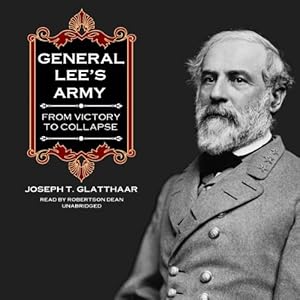General Lee's Army: From Victory to Collapse (2008) by Joseph T. Glatthaar begins roughly a year before the first Battle of Manassas a/k/a Bull Run.
His argument, with which I agree, is that the Army of Northern Virginia was the closest to successful of any institution that the CSA established. Over the course of this history of Lee's army it emerges how only the Army of Virginia embodied all the elements that made it impossible for the CSA ever to have become a functioning state -- which it never was. Our argument is that what the CSA was, was an army. The army was always willing to fight, but it wasn't willing to take ordesr, recognize a chain of command or (until far into the war around the late 1863's-1864) dig trenches or build other defenses. It would not do labor, manual or otherwise. The officers lived a very different way from the lower ranks of poor whites, and ate far better, Though Glatthaar doesn't mention this (or that there were signficant populations in the secession states who didn't agree with the war) -- it was the manners and behaviors of the well-connected officers that perhaps more than anything caused massive desertion, as particularly the wives and children back home were starving -- in great part to the planter class acting as tax in kind collectors, stealing everything they could. He doesn't mention this either, but these officers were behaving to the lower ranks in the way slave owners behaved to their property . . . .
Glatthaar never denies that the the South seceded and went to war for the sake of preserving slavery. He seems to have no idea, however, that the actual objective was to expand slavery.
Glatthaar's declarations with which I do not agree, are that the South only wanted to be left alone to leave the Union. Glatthaar's a military historian, and this is the problem -- he doesn't see a large enough picture. He deals only with the members of the army and the battles.
What is most valuable about this history is Glatthaar's painstakingly gathered stats on how many members of the army were deeply rooted in slave owning -- particularly the officer class. The previous calculations of how many owned slaves, how many slaves owned, how wealthy they were are all vastly incorrect according to the information he's gathered. Many soldiers may not have been able to claim they owned even a single slave, but they lived with their father, who did, in a relative's home who did. Most of them were closely connected to those who owned 20 or more slaves -- which put them even above the comfortably middle-class. In other words, it was difficult to find in any of the ranks above the lowest anyone who didn't live a way of life according to the benefits of possessing slavery. Their clothes were washed and cared for, their food cooked and cleaned up after, their horses and horses' tack -- all this and more by slaves, even if they themselves didn't own the paper on them.
What is most valuable about this history is Glatthaar's painstakingly gathered stats on how many members of the army were deeply rooted in slave owning -- particularly the officer class. The previous calculations of how many owned slaves, how many slaves owned, how wealthy they were are all vastly incorrect according to the information he's gathered. Many soldiers may not have been able to claim they owned even a single slave, but they lived with their father, who did, in a relative's home who did. Most of them were closely connected to those who owned 20 or more slaves -- which put them even above the comfortably middle-class. In other words, it was difficult to find in any of the ranks above the lowest anyone who didn't live a way of life according to the benefits of possessing slavery. Their clothes were washed and cared for, their food cooked and cleaned up after, their horses and horses' tack -- all this and more by slaves, even if they themselves didn't own the paper on them.


No comments:
Post a Comment